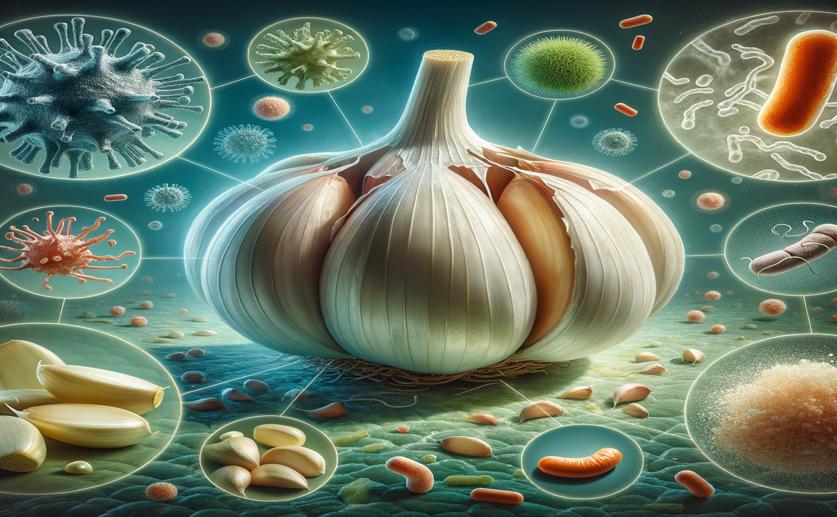
Understanding How Bacterial Enzymes Break Down Garlic Compounds
Greg Howard
30th May, 2024

Image Source: Natural Science News, 2024
Key Findings
- Researchers at Shandong University found bacterial enzymes that can produce thiosulfinates, compounds with strong antimicrobial properties, from garlic
- These bacterial enzymes showed high activity in converting garlic compounds into thiosulfinates, potentially overcoming the limited availability of the natural enzyme alliinase
- The study suggests that using these bacterial enzymes could enhance the production of thiosulfinates, offering new ways to protect crops from pests and pathogens
References
Main Study
1) Identification and Characterization of Bacterial Alliinase: Resource and Substrate Stereospecificity.
Published 29th May, 2024
https://doi.org/10.1021/acs.jafc.4c02404
Related Studies
2) Allicin: chemistry and biological properties.
3) Allicin-Inspired Heterocyclic Disulfides as Novel Antimicrobial Agents.
4) Recent Advances in the Development of Environmentally Benign Treatments to Control Root-Knot Nematodes.



 29th May, 2024 | Jim Crocker
29th May, 2024 | Jim Crocker